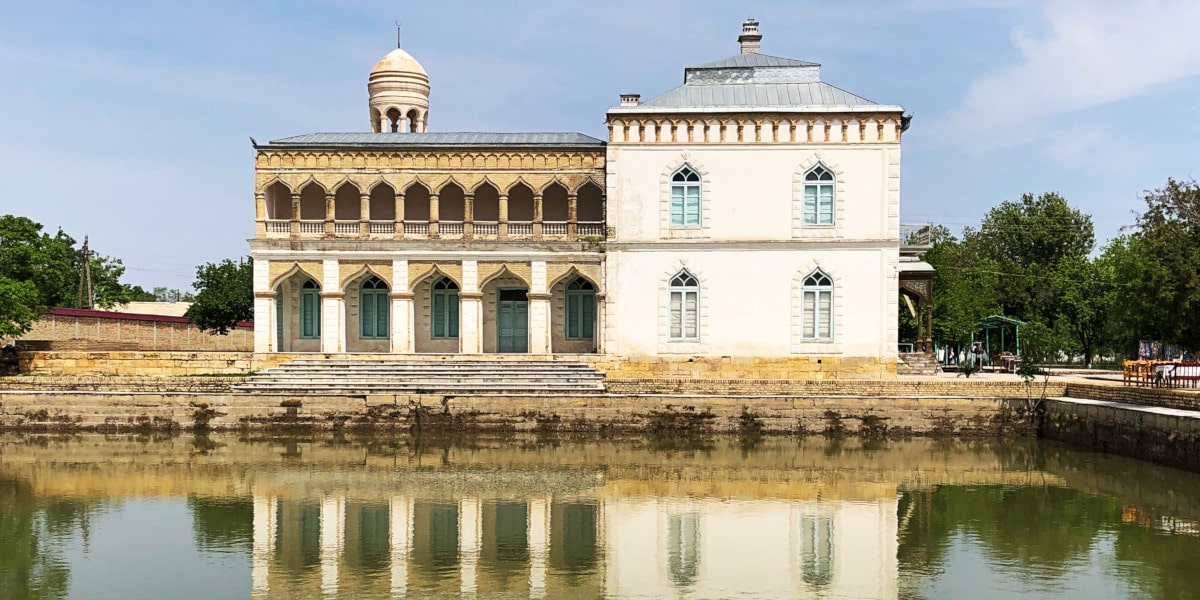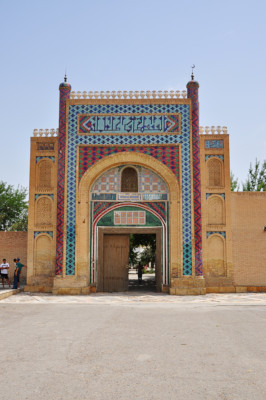In 1911 Emir Said Alim Khan, the 31-year-old emir, ascended the throne in the Bukhara Emirate. As history shows, he became the last ruler of Bukhara. The construction of the palace started on his order. During his studies in St. Petersburg, the emir was fascinated by the palaces of the Russian tsar. Later, he commissioned a residence that incorporated many elements of the Russian style with the classical bases of Bukhara Emirate architecture.

The chief architect of the palace was master Shirin Muradov, a native of Bukhara, whose bust stands in the palace’s garden. But two Russian engineers Margulis and Sakovich, were also involved in constructing the summer residence.
Shirin Muradov was also responsible for the decoration of the rooms. It is worth noting the “White Hall”, which preserved traditional Bukhara interior decoration: alabaster modelling with “carved” patterns, typical Bukhara division of walls into surfaces and niches, but the alabaster carving was applied not directly onto the wall, but onto the mirrors. This makes the work even more elegant.
In addition to the buildings, a large number of trees and flowers were planted on the territory of the summer residence to create coolness. The palace was completed in 1917. Since then, the emir used to spend the summer months in this palace

entrance to the palace 
white hall
Summer palace today
Three main buildings survived the original palace and are now used as museums:
| The palace museum | This museum is located in the main building of the palace. In addition to the impressive halls (including the White Hall), the museum displays furniture, vases and other objects that were used in the palace during the time of the last emir. |
Museum of clothes | The museum displays women and men clothes, hats and jewellery of the late 19th and early 20th centuries. |
| Arts and Crafts Museum | The museum mainly represents the traditional embroidery (suzani) of the 19th and 20th centuries. In addition, ceramics from Gijduvan are displayed. One of the rooms displays a scene from the traditional life of an Uzbek family. |